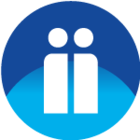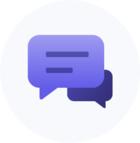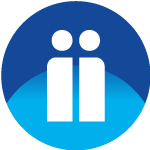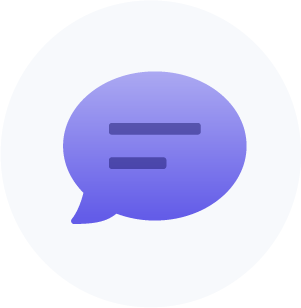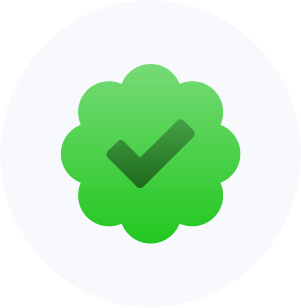This article was written by Marc Cousineau.
Safety first. It’s a term you’ve probably heard, and said, thousands of times. And for good reason— the safety of your team is incredibly important. Even minor accidents can have a profound impact on everything from productivity and morale, to the environment and individual lives, and lead to injuries, fines, lawsuits and more.
An overreliance on reactive maintenance is a major cause of accidents in many production environments. In fact, one study found that corrective maintenance leads to twice the number of accidents than preventive maintenance. Establishing a preventive maintenance strategy is one way for maintenance teams to take control of their time, resources and money to reduce the likelihood of accidents.
Although every maintenance manager would say it’s a top priority to improve health and safety, implementing preventive maintenance is not an easy goal to accomplish amidst a flurry of work orders, overseeing technicians, formulating reports, making purchasing decisions and other daily tasks. It’s especially difficult when you are relying on paper records or hard-to-organize spreadsheets.
However, making the move from pen and paper to a digital maintenance system allows teams an easier way to transition from reactive maintenance to preventive maintenance and create a safer, healthier work environment in the process.
How to improve health and safety by taking your maintenance digital
The following are five ways to improve health and safety at work by moving to maintenance software.
Create a better inventory of assets
Equipment or parts that are out of place can lead to unnecessary delays and accidents. When it comes to ensuring safety in your facility, equipment must be easy to find for workers and workers should be aware of any health and safety concerns associated with particular assets. Digital maintenance software allows your organization to map out all assets in a facility, create naming conventions so they are easy to locate and attach safety notices to any asset, which can then be seen by technicians and operators.
Organize employees more strategically
A digital maintenance platform, such as a CMMS, allows maintenance managers to create a facility-wide health and safety database that keeps them informed and compliant. Using a centralized digital database, facilities can keep track of which employees have certain skills, training and certifications and ensure tasks are done by qualified workers.
An overreliance on reactive maintenance is a major cause of accidents in many production environments. In fact, one study found that corrective maintenance leads to twice the number of accidents than preventive maintenance.
Make information more accessible
A great health and safety plan is only half the battle; you also need to ensure the safety procedures are being followed. Having all materials and resources on a digital platform is a crucial way to achieve this goal. This includes safety documents, SOPs, videos, and safe handling instructions. It also allows for the documentation of hazardous materials to be much easier. Workers can be notified of new procedures, laws and protocols, and disaster drills and emergency response plans can be shared.
Standardize tasks and checklists
Standardization is a key component of proper maintenance. Without it, checks and repairs can be done incorrectly or missed altogether. This can lead to unsafe work and an increase in the likelihood of accidents. By accessing standardized checklists for tasks, technicians can service an asset in the safest, most efficient way possible as determined by asset history, the reason for maintenance and other factors.
Collect better data
Knowledge is power, especially when it comes to building a great health and safety program. Having as much data as possible is very important and a digital platform, such as a CMMS can help with that. With software, data can be collected about the condition and maintenance history of assets, as well as accidents, near misses and safety concerns. This information allows managers and workers to plan better, flag areas of improvement, provide better training and improve health and safety overall.
Tools from the Fiix CMMS that can improve health and safety at your facility
The following are a few key features within Fiix’s CMMS that can be used by maintenance teams to improve health and safety while staying productive and increasing reliability.
Task groups
Building tasks groups in the Fiix CMMS allows users to ensure consistency and completeness when performing maintenance while reducing errors, which creates a safer environment. Task groups, whether it’s for one asset or many, provide an opportunity to form standardized checklists and procedures, add notes related to an asset’s safety record, including required PPE, mark estimated completion times and more. These checklists can then be inserted directly into work orders. Task groups create sign-off sheets and collect data, helping facilities build a record of compliance, which can be used for audits.
A great health and safety plan is only half the battle; you also need to ensure the safety procedures are being followed.
Adding documents to assets
The ability to attach documents, videos, links and other resources to an asset’s profile provides technicians with the information they need to safely complete a work order or preventive maintenance. Retrieving a physical copy of a safety document often means more downtime and the temptation to skip this step means an accident is more likely to occur. Using a CMMS can help to cut down on this temptation by making information easily and quickly accessible to technicians. Details can be added to an equipment’s profile, such as a manual, how-to video, diagram, SOP or material safety data sheets (MSDS), to assist a technician.
Scheduling and calendar
Fiix’s scheduling and calendar feature is not only great for planning preventive maintenance, but also for making sure health and safety checks are completed on time. Both preventive maintenance and safety checks go a long way to ensuring all aspects of a facility are safe for employees, and it’s crucial to ensure they are done on time and on a regular basis. Not only will safety checks be done when they need to be, but the calendar module will allow maintenance managers to coordinate these checks will normal production. This helps organizations prioritize both health and safety and production.
Report creation
The CMMS’s reporting function can help facilities improve their health and safety processes in a big way. Incidents can be documented for holistic evaluation and safety findings can be extracted from meta reports. Common problems can be identified and corrective actions can be taken. The reporting function can also track work logs, observations, and inspection type while creating a historical life cycle for tasks (the date and time of tasks and who completed it). These reports will limit the number of recurring accidents and can be used for both internal and external health and safety audits.
Health and safety user profiles
On the Fiix CMMS, each technician’s profile can be managed to include health and safety information. This profile can include the individual’s safety records, training, certifications and upcoming recertification dates. This tool allows maintenance managers to monitor the skills that each employee has, build appropriate training plans and ensure that specific maintenance tasks are assigned only to qualified workers.
Did we miss anything? Let us know how you and your team improve health and safety by taking your maintenance digital. Share in the comments section below.👇


